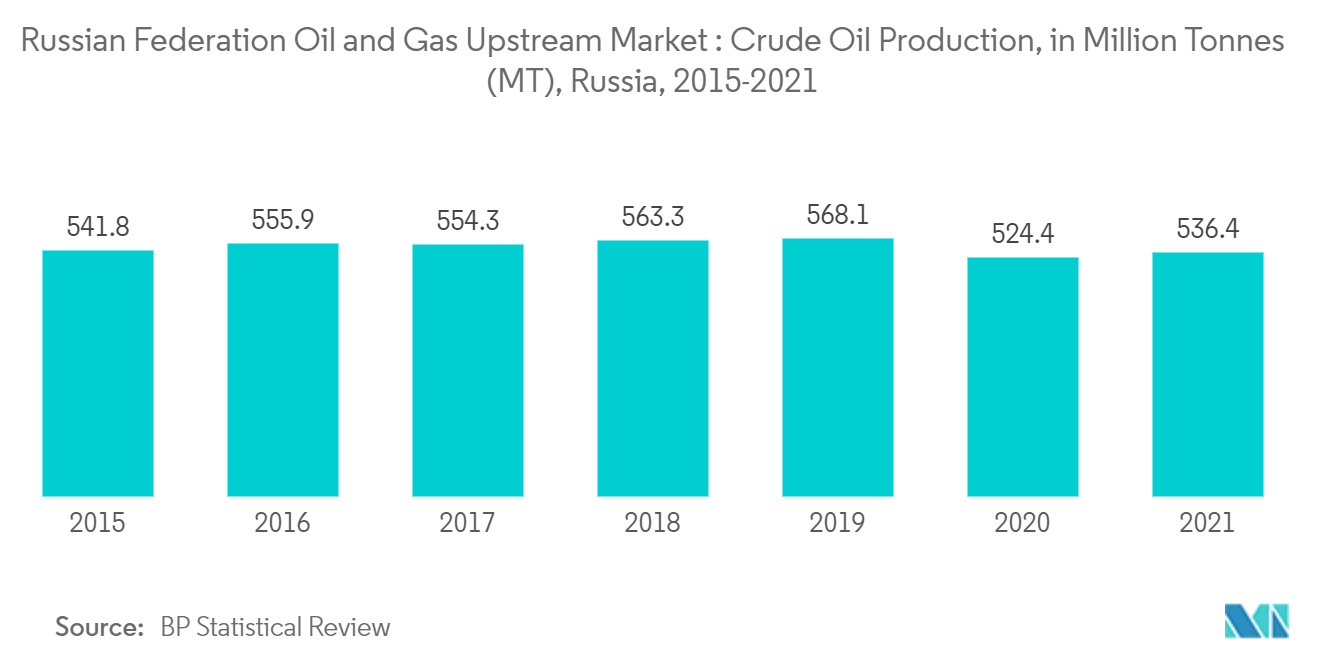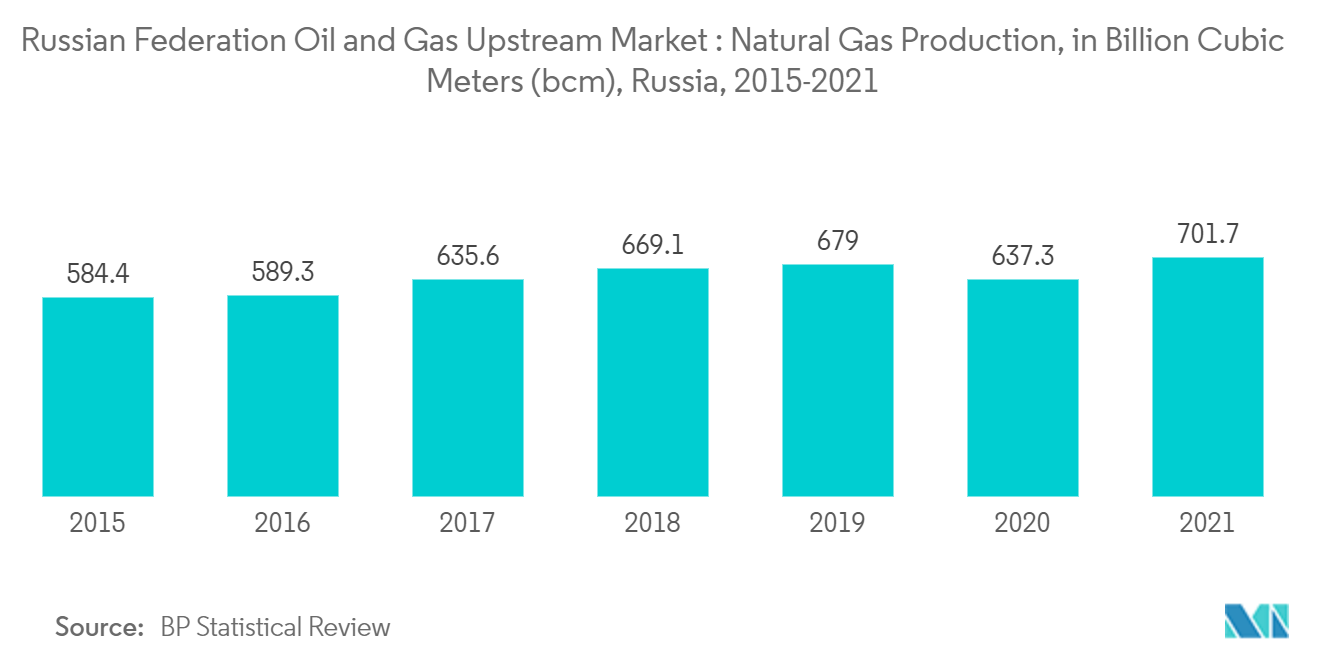Market Trends of Russian Federation Oil and Gas Upstream Industry
This section covers the major market trends shaping the Russian Federation Oil & Gas Upstream Market according to our research experts:
Onshore Segment Expected to Dominate the Market
- For the past several years, Russia has been the world's top three oil and gas producers. Most of the country's oil and gas are exported to other countries, making oil and gas a significant revenue generation.
- Russia, with the most abundant gas reserve in the world, comprising 19.9% of the global gas reserve, is also the second-largest gas producer, behind the United States. With countries around the globe trying to reduce carbon emissions by phasing out coal-based power plants, the natural gas demand for power generation is expected to increase.
- In 2021, the total crude oil production in Russia was 536.4 Million Tonnes (MT), which was higher than that of 2020, 524.4 MT. After Russia Ukraine war, Financial restrictions imposed by the West made it challenging to clear Russian oil transactions through Western banks. Normally, 10% of the world's oil supply comes from Russia. There is a supply deficit; it is still traded, but not to the same extent.
- In 2022, One of the world's largest integrated oil and liquefied natural gas (LNG) projects is the Sakhalin-2 project, situated on Sakhalin Island in Russia. Additionally, it is the first LNG facility and offshore gas project in Russia. The project is operated by Sakhalin Energy Investment Company (Sakhalin Energy), a joint venture between Russian state-owned companies Gazprom (50%), Shell (27.5%), Mitsui (12.5%), and Mitsubishi (10%). It consists of both offshore and onshore facilities.
- Therefore, owing to the above points, the onshore segment is likely to dominate the Russia Federation Oil and Gas Upstream Market during the forecast period.

Increasing Offshore Activities Expected to Drive the Market
- Though the country's major share of oil and gas production comes from the onshore fields, the country, in the past years, saw a decline in production and a reduction in onshore reserves. Recently offshore oil and gas have been adding significantly to the country's hydrocarbon production due to increasing activities in the Arctic region.
- United states have banned the import of oil from Russia, along with refined petroleum products, natural gas, coal as well as technology purchases after Russia Ukraine war. The ban on technology purchases from the United States had made it hard for the country to develop complex shale and offshore projects; this has led to a shift from western technological partners to south and east for assistance and technical support. Chinese companies have been active in Russia in recent years in exploration in offshore fields, and Gazprom Neft has been actively talking with Chinese companies to develop the Chona project in Eastern Siberia.
- Furthermore, in 2021, the total gas production in Russia was 701.7 Billion Cubic Meters (cm), which was higher than in 2020, 637.3 bcm. The increasing gas production in the country is likely to positively impact the Russian Federation's oil and gas upstream market.
- Moreover, in August 2022, On the Taimyr Peninsula's Payakhskoye field, Rosneft began production drilling. By the end of 2022, the Russian energy company intends to dig roughly 80 wells there. The Vostok Oil strategic project by Rosneft includes the Payakhskoye field. Its license fund consists of 52 subsurface plots, 13 of which have been found to contain fields; four of these have already been developed utilizing cutting-edge technology.
- Hence, owing to the above points, the increasing offshore activities are expected to drive the Russian Federation oil and gas upstream market during the forecast period.


